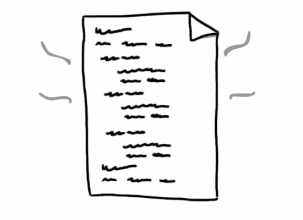|
Rule Of Three (programming)
Rule of three (''"Three strikes and you refactor"'') is a code refactoring rule of thumb to decide when similar pieces of code should be refactored to avoid duplication. It states that two instances of similar code do not require refactoring, but when similar code is used three times, it should be extracted into a new procedure. The rule was popularised by Martin Fowler in ''Refactoring'' and attributed to Don Roberts. Duplication is considered a bad practice in programming because it makes the code harder to maintain. When the rule encoded in a replicated piece of code changes, whoever maintains the code will have to change it in all places correctly. However, choosing an appropriate design to avoid duplication might benefit from more examples to see patterns in. Attempting premature refactoring risks selecting a wrong abstraction, which can result in worse code as new requirements emerge Sandi Metz''"The Wrong Abstraction"'' (2016)/ref> and will eventually need to be refactor ... [...More Info...] [...Related Items...] OR: [Wikipedia] [Google] [Baidu] |
|
|
Code Refactoring
In computer programming and software design, code refactoring is the process of restructuring existing source code—changing the '' factoring''—without changing its external behavior. Refactoring is intended to improve the design, structure, and/or implementation of the software (its '' non-functional'' attributes), while preserving its functionality. Potential advantages of refactoring may include improved code readability and reduced complexity; these can improve the source code's maintainability and create a simpler, cleaner, or more expressive internal architecture or object model to improve extensibility. Another potential goal for refactoring is improved performance; software engineers face an ongoing challenge to write programs that perform faster or use less memory. Typically, refactoring applies a series of standardized basic ''micro-refactorings'', each of which is (usually) a tiny change in a computer program's source code that either preserves the behavior of ... [...More Info...] [...Related Items...] OR: [Wikipedia] [Google] [Baidu] |
|
 |
Rule Of Thumb
In English language, English, the phrase ''rule of thumb'' refers to an approximate method for doing something, based on practical experience rather than theory. This usage of the phrase can be traced back to the 17th century and has been associated with various Trade (occupation), trades where quantities were measured by comparison to the width or length of a thumb. An erroneous folk etymology began circulating in the 1970s falsely connecting the origins of the phrase "rule of thumb" to legal doctrine on Domestic violence, domestic abuse. The error appeared in a number of law journals, and the United States Commission on Civil Rights published a report on domestic abuse titled "Under the Rule of Thumb" in 1982. Some efforts were made to discourage the phrase, which was seen as taboo owing to this false origin. During the 1990s, several authors correctly identified the spurious folk etymology; however, the connection to domestic violence was still being cited in some legal sources ... [...More Info...] [...Related Items...] OR: [Wikipedia] [Google] [Baidu] |
|
Martin Fowler (software Engineer)
Martin Fowler (18 December 1963) is a British software developer, author and international public speaker on software development, specialising in object-oriented analysis and design, UML, patterns, and agile software development methodologies, including extreme programming. His 1999 book ''Refactoring'' popularised the practice of code refactoring. In 2004 he introduced a new architectural pattern, called Presentation Model (PM). Biography Fowler was born and grew up in Walsall, England, where he went to Queen Mary's Grammar School for his secondary education. He graduated at University College London in 1986. In 1994, he moved to the United States, where he lives near Boston, Massachusetts in the suburb of Melrose.Martin Fowler at martinfowler.com. Retrieved 2012-11-15. Fowler started working with software in the early 1980s. Out of ... [...More Info...] [...Related Items...] OR: [Wikipedia] [Google] [Baidu] |
|
 |
Code Duplication
In computer programming, duplicate code is a sequence of source code that occurs more than once, either within a program or across different programs owned or maintained by the same entity. Duplicate code is generally considered undesirable for a number of reasons. A minimum requirement is usually applied to the quantity of code that must appear in a sequence for it to be considered duplicate rather than coincidentally similar. Sequences of duplicate code are sometimes known as code clones or just clones, the automated process of finding duplications in source code is called clone detection. Two code sequences may be duplicates of each other without being character-for-character identical, for example by being character-for-character identical only when white space characters and comments are ignored, or by being token-for-token identical, or token-for-token identical with occasional variation. Even code sequences that are only functionally identical may be considered duplicate cod ... [...More Info...] [...Related Items...] OR: [Wikipedia] [Google] [Baidu] |
 |
Software Maintenance
Software maintenance is the modification of software after delivery. Software maintenance is often considered lower skilled and less rewarding than new development. As such, it is a common target for outsourcing or offshoring. Usually, the team developing the software is different from those who will be maintaining it. The developers lack an incentive to write the code to be easily maintained. Software is often delivered incomplete and almost always contains some bugs that the maintenance team must fix. Software maintenance often initially includes the development of new functionality, but as the product nears the end of its lifespan, maintenance is reduced to the bare minimum and then cut off entirely before the product is withdrawn. Each maintenance cycle begins with a change request typically originating from an end user. That request is evaluated and if it is decided to implement it, the programmer studies the existing code to understand how it works before implementing the ... [...More Info...] [...Related Items...] OR: [Wikipedia] [Google] [Baidu] |
|
Sandi Metz
Sandi Metz is an American software engineer and author. She is the author of ''Practical Object-Oriented Design in Ruby''. Metz teaches workshops around the country for new and experienced developers, emphasizing good programming habits and practices. Metz is known for her books and articles on object-oriented programming and her statement regarding the Don't repeat yourself principle, that duplication is cheaper than the wrong abstraction. Publications * Metz, Sandi (September 5, 2012), ''Practical Object-Oriented Design in Ruby'' (First ed.), Addison-Wesley, * Metz, Sandi & Owen, Katrina (Mar 20, 2017), ''99 Bottles of OOP'' (First ed.), Potato Canyon Software, LLC, Important concepts elaborated * SOLID Design principles * Test-driven development * Dependency injection In software engineering, dependency injection is a programming technique in which an object or function receives other objects or functions that it requires, as opposed to creating them internally. Dep ... [...More Info...] [...Related Items...] OR: [Wikipedia] [Google] [Baidu] |
|
 |
Copy-and-paste Programming
Copy-and-paste programming, sometimes referred to as just pasting, is the production of highly repetitive computer programming code, as produced by copy and paste operations. It is primarily a pejorative term; those who use the term are often implying a lack of programming competence and ability to create abstractions. It may also be the result of technology limitations (e.g., an insufficiently expressive development environment) as subroutines or libraries would normally be used instead. However, there are occasions when copy-and-paste programming is considered acceptable or necessary, such as for Boilerplate code, boilerplate, loop unrolling (when not supported automatically by the compiler), languages with limited metaprogramming facilities, or certain programming idioms, and it is supported by some source code editors in the form of Snippet (programming), snippets. Origins Copy-and-paste programming is often done by inexperienced or student programmers, who find the act of wr ... [...More Info...] [...Related Items...] OR: [Wikipedia] [Google] [Baidu] |
|
Don't Repeat Yourself
"Don't repeat yourself" (DRY) is a principle of software development aimed at reducing repetition of information which is likely to change, replacing it with abstractions that are less likely to change, or using data normalization which avoids redundancy in the first place. The DRY principle is stated as "Every piece of knowledge must have a single, unambiguous, authoritative representation within a system". The principle has been formulated by Andy Hunt and Dave Thomas in their book '' The Pragmatic Programmer''. They apply it quite broadly to include database schemas, test plans, the build system, even documentation. When the DRY principle is applied successfully, a modification of any single element of a system does not require a change in other logically unrelated elements. Additionally, elements that are logically related all change predictably and uniformly, and are thus kept in sync. Besides using methods and subroutines in their code, Thomas and Hunt rely on c ... [...More Info...] [...Related Items...] OR: [Wikipedia] [Google] [Baidu] |
|
|
You Aren't Gonna Need It
"You aren't gonna need it" (YAGNI) is a principle which arose from extreme programming (XP) that states a programmer should not add functionality until deemed necessary. Other forms of the phrase include "You aren't going to need it" (YAGTNI) and "You ain't gonna need it". Ron Jeffries, a co-founder of XP, explained the philosophy: "Always implement things when you actually need them, never when you just foresee that you illneed them." John Carmack wrote "It is hard for less experienced developers to appreciate how rarely architecting for future requirements / applications turns out net-positive." Context YAGNI is a principle behind the XP practice of "do the simplest thing that could possibly work" (DTSTTCPW). It is meant to be used in combination with several other practices, such as continuous refactoring, continuous automated unit testing, and continuous integration. Used without continuous refactoring, it could lead to disorganized code and massive rework, known as technical ... [...More Info...] [...Related Items...] OR: [Wikipedia] [Google] [Baidu] |
|
 |
Computer Programming Folklore
A computer is a machine that can be programmed to automatically carry out sequences of arithmetic or logical operations (''computation''). Modern digital electronic computers can perform generic sets of operations known as ''programs'', which enable computers to perform a wide range of tasks. The term computer system may refer to a nominally complete computer that includes the hardware, operating system, software, and peripheral equipment needed and used for full operation; or to a group of computers that are linked and function together, such as a computer network or computer cluster. A broad range of industrial and consumer products use computers as control systems, including simple special-purpose devices like microwave ovens and remote controls, and factory devices like industrial robots. Computers are at the core of general-purpose devices such as personal computers and mobile devices such as smartphones. Computers power the Internet, which links billions of compute ... [...More Info...] [...Related Items...] OR: [Wikipedia] [Google] [Baidu] |